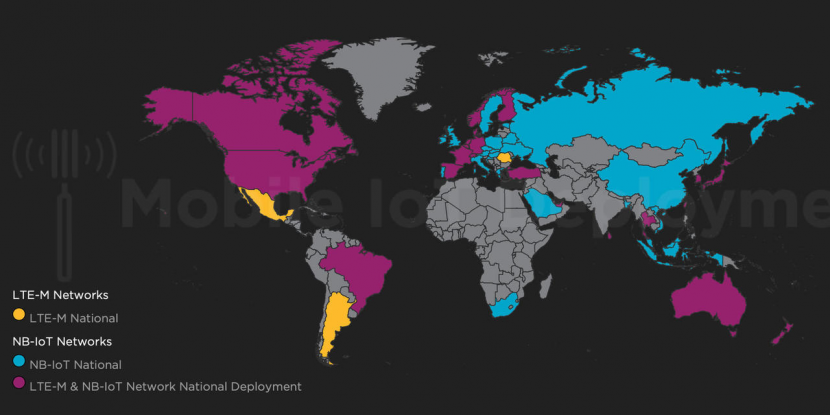#1 Global Coverage
Let’s skip the stats about how IoT is dominating, and will be affixed with the rocket booster that is 5G. Anyone in the startup sphere knows that IoT is going to play a major role in the continuing digitalization of enterprise going forward. With this enormous surge in devices comes a burgeoning expansion of connectivity use cases, which requires a range of coverage and data usage options.

Consider the potential differences in coverage needs and data usage between a global logistics company that uses remote sensors traveling the world over trickling crucial temperature data hourly, to a surveillance service with static cameras transmitting a huge volume of data constantly. Consideration must also be given to device type, battery life, and therefore the adequate network type. The surveillance company will suffice with two dependable networks, whereas the logistics company requires seamless global coverage over hundreds of networks.
Open Source
Currently there are many ideas about how to bring global coverage to IoT. LoRaWan (or LoRa for short) and Sigfox are novel, long-range, open source technologies with decent coverage and low power usage. Unfortunately, they both limit data to short and intermittent transmission and very low peak rates. LoRaWan relies on gateways, and Sigfox (LPWan) does not have accurate location capabilities. Neither of these has truly global coverage (as many countries have no coverage at all), and others are still under roll out.
NB-IoT
Narrow Band (NB-IoT) is expanding steadily as well. NB-IoT has a coverage footprint similar to LoRaWan (except most notably, China). It was developed to improve indoor coverage, support high density, decrease power consumption, and decrease costs. NB2 allows for higher data rates of 127kbps downlink and 159kbps uplink. Narrow Band differs from the others for two key reasons:
It is a radio technology which piggybacks off of existing mobile network architecture.
As it can easily be implemented on any existing LTE network, it is growing rapidly and will likely see the same coverage as it is adopted by more and more networks.
It is already standardized and regulated under 3GPP guidelines.
Already under the umbrella of GSM standardization, it will continue to allow for better global interaction and security.
LTE-M

LTE-MTC is a low power wide area network (LPWAN) radio standard designed for machine to machine (M2M) communication. This is also a narrow-band technology, but at 5MHz is not as narrow as NB-IoT. Cat M1 supports up to 1Mbps and is found in about 100 networks worldwide.
2G, 3G, 4G

Existing mobile network architecture already supports the largest, most globalized access to data on the planet. Every country has a broad and extensive mobile network capable of offering any enterprise the best coverage possible second only to satellite. Traditionally however, accessing the global breadth of this network without exposure to outrageous roaming fees was impossible.
A plan with a single carrier, even given their agreements with other networks, may leave many countries off limits or unfeasibly expensive. On the other hand, deploying on a per-country basis or switching networks required physically changing the SIM in each device. Not to mention that this leaves only one network option, again relying on the agreements of that carrier. What is an IoT fleet to do?
Insist on global connectivity under one contract at a reasonable cost.
Global connectivity has become a thing of the present. Choose an MVNO that simplifies your operations by offering a coverage plan that spans the planet, without roaming fees and unpredictable data rates — under one contract.












Leave a Reply